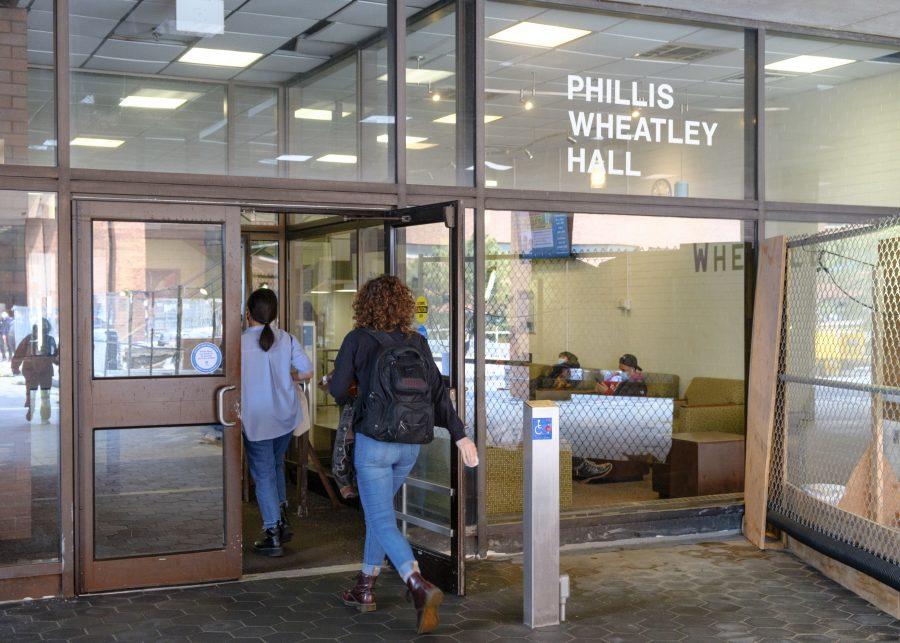On Friday, March 25, two experts hired by UMass Boston employee unions delivered a Zoom presentation to the campus community reporting the results of their November and December 2021 investigation of the air quality in Wheatley. The experts, Mike Sireci and Rafael Moure-Eraso, recommended updating, conducting an overall evaluation of, and balancing of the Heating, Ventilation and Air Conditioning system, as well as supplementing these efforts with portable air purifiers and applying for federal and state loans to cover costs of improvements.
Sireci and Moure-Eraso highlighted their ventilation, CO2 and Particulate-PM2.5 assessment results in their presentation.
35 Wheatley classrooms, labs and offices were tested for inadequate air supply, which is defined as less than four air changes per hour. Out of the 35 rooms, 21 rooms, or 60 percent, were found to have inadequate air supply.
Out of 35 Wheatley rooms, seven were above the 800 ppm CO2 guideline without students in the room. This indicates low air quality, poor ventilation and a potential for levels to reach 1,000 ppm when students enter the room.
“It will be not only an indication that the air is not moving, but also, there are a number of studies that show high levels of carbon dioxide [produce] a big obstacle for people to concentrate and for people to have a learning environment,” said Moure-Eraso. “So it’s bad for students, and it’s bad for teachers.”
Out of 35 Wheatley rooms, 16 spaces demonstrated a particulate reading indicative of “low air quality, deficient ventilation and airborne respirable particle concentrations above outside levels,” per Sireci and Moure-Eraso’s presentation slides.
In their presentation, Sireci and Moure-Eraso spoke about why HVAC matters in relation to COVID-19.
“Ventilation (HVAC) improvements will remove aerosols carrying viruses (COVID-19 and others) by replacing room air with outside and filtered air,” read one slide. “Stale room air can carry small-carrying virus particles for two to six hours.”
The Mass Media spoke with campus community members regarding this topic.
“Knowing that this report was coming—because the administration did know it was coming—why was the mask mandate lifted at the time it was lifted?” asked Liz Simpson, a graduate student and elected member of the organizing committee for the Graduate Student Union via Zoom. “The university will say it’s following the science; since early on in the pandemic they have been following CDC recommendations, which is appropriate. However, I think it was in September, they lifted the social distancing requirement for classrooms because people were still wearing masks. Now they’ve lifted masking, but people are still really close together because we’re no longer social distancing in classrooms. So in these spaces like Wheatley, where the air turnover isn’t adequate, that’s an unsafe environment in my opinion.”
The Mass Media spoke with Steve Striffler, president of the Faculty Staff Union, professor of Labor Studies, and Director of the Labor Resource Center, along with Simpson via Zoom. Striffler and Simpson explained how employee unions on campus acquired a grant to conduct this investigation, and how student and employee union groups were used to get the word out about the March 25 presentation.
“We also invited the administration, too,” said Striffler. “And [we] made a long effort for them to come, but they did not.” Simpson added that the unions had attempted to inform administration of the contents of the presentation before sharing it with the entire campus community. However, upon receiving no reply from administration, the presentation was scheduled for the larger community.
When asked how plausible he thought it was that the university would make the changes recommended by the investigators, Striffler spoke to short-term solutions that the university was already implementing, such as the purchasing of HEPA air filters.
“I think the one thing they could do immediately that I think the report suggests, is they should test certainly more spaces on campus, and certainly more spaces in the older buildings,” added Striffler. Simpson echoed this statement, stressing that the investigators only conducted their study on a sample of classrooms in one building across the university.
Striffler also stated that he believes the university should be applying for funding to combat this issue “more aggressively” than they currently are.
In order to find more information regarding the results of the air quality report, visit the Faculty Staff Union’s website at fsu.umb.edu.





















































